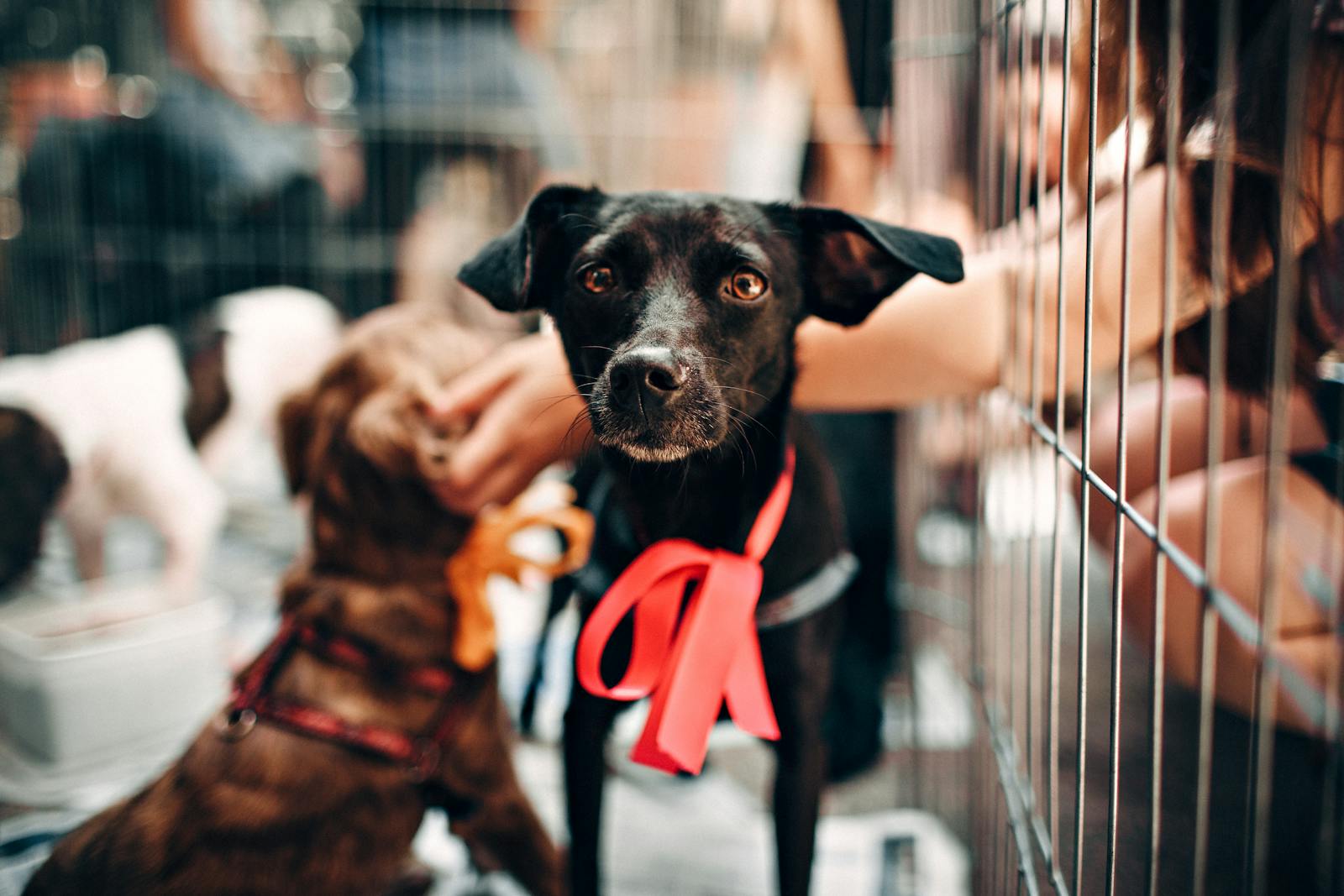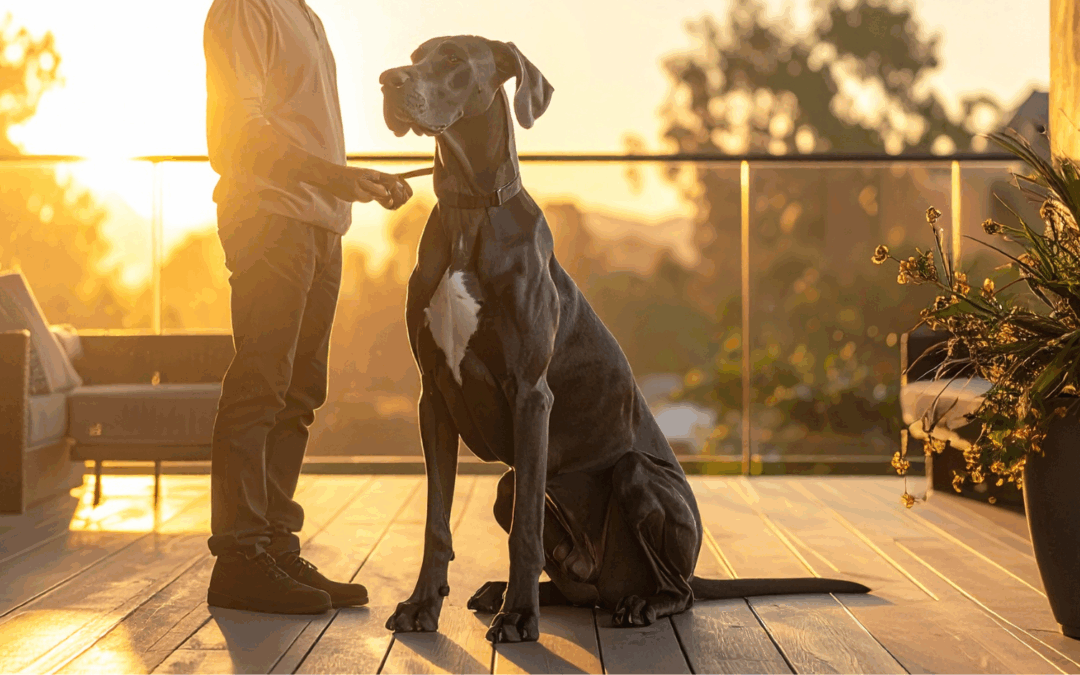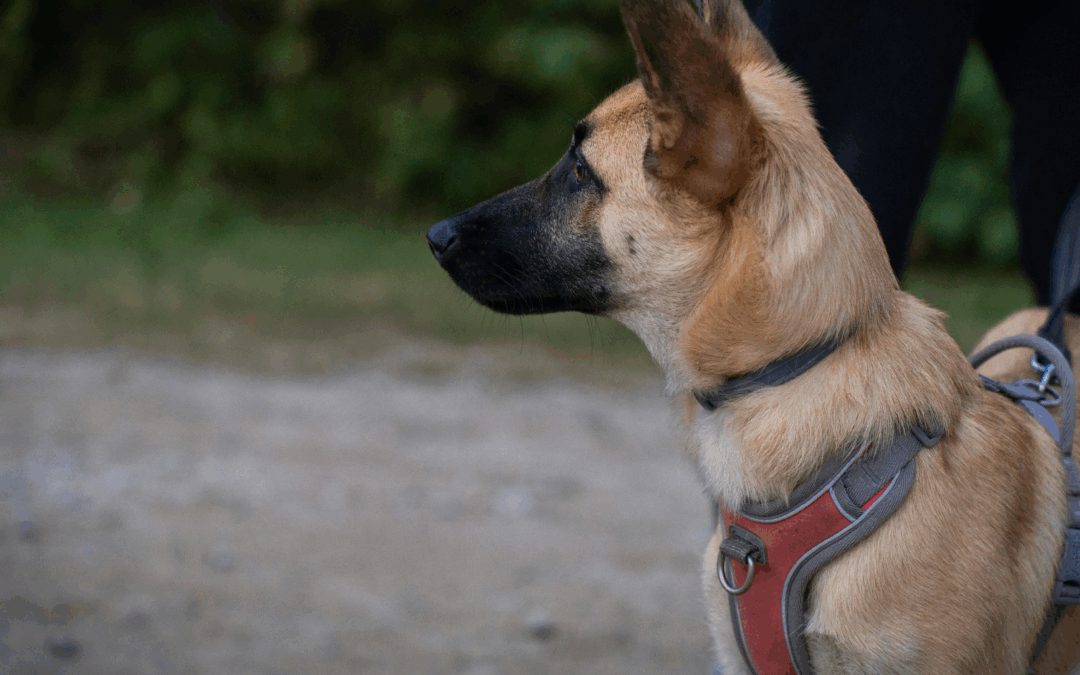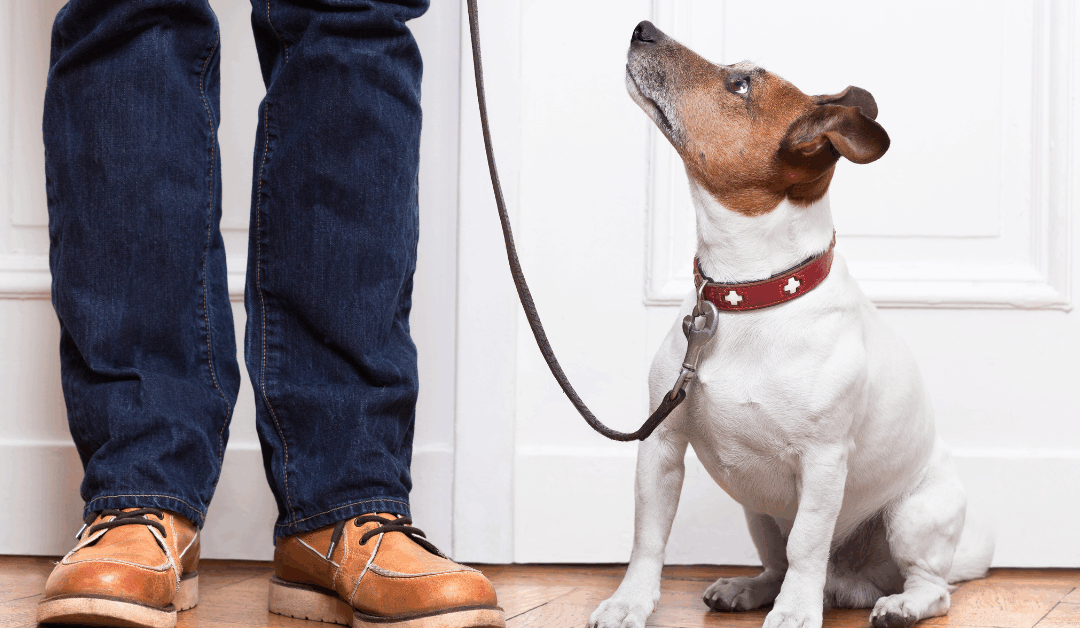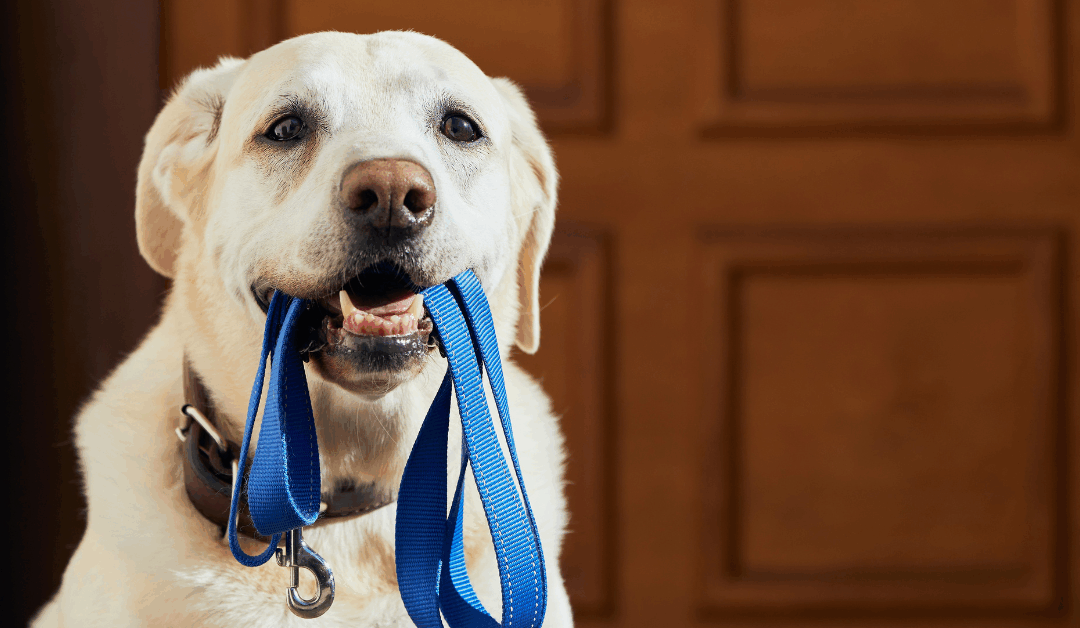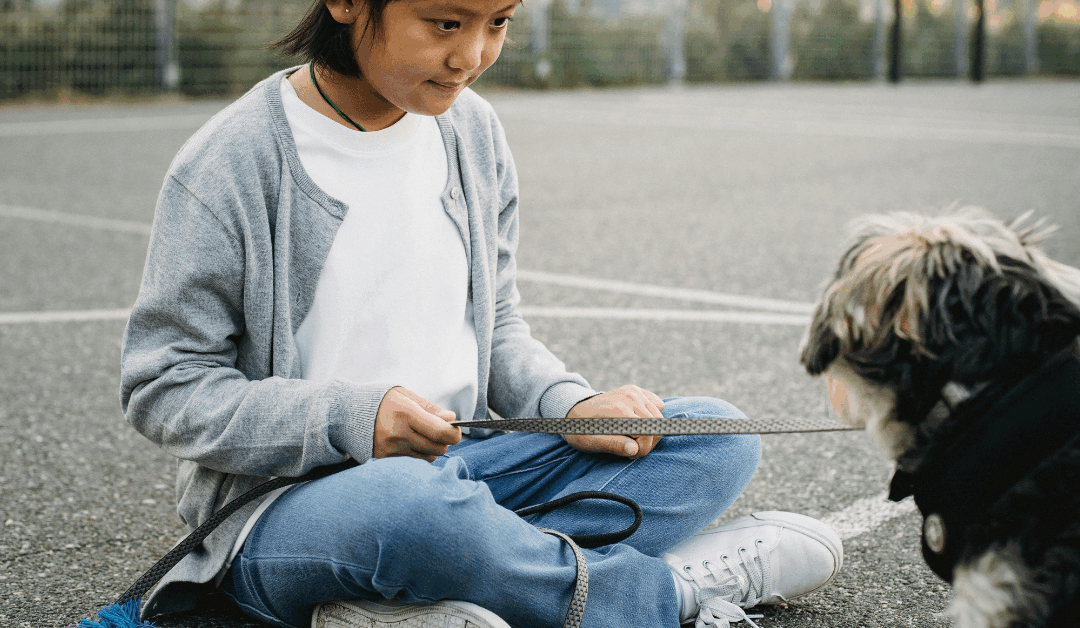Bringing a rescue dog into your home is one of the most rewarding experiences you can have. These resilient animals have often faced challenges that would break many spirits, yet they still have an incredible capacity for love and loyalty. However, training a rescue dog comes with unique considerations that differ significantly from training a puppy from a breeder.
Understanding what lies ahead can make the difference between a successful adoption and a heartbreaking return to the shelter. Rescue dogs arrive with their own histories, behavioral patterns, and emotional baggage. Some may have lived in multiple homes, others might have experienced neglect or abuse, and many simply lack basic training. The good news? With patience, consistency, and the right approach, these amazing animals can become your most devoted companion and best friend.
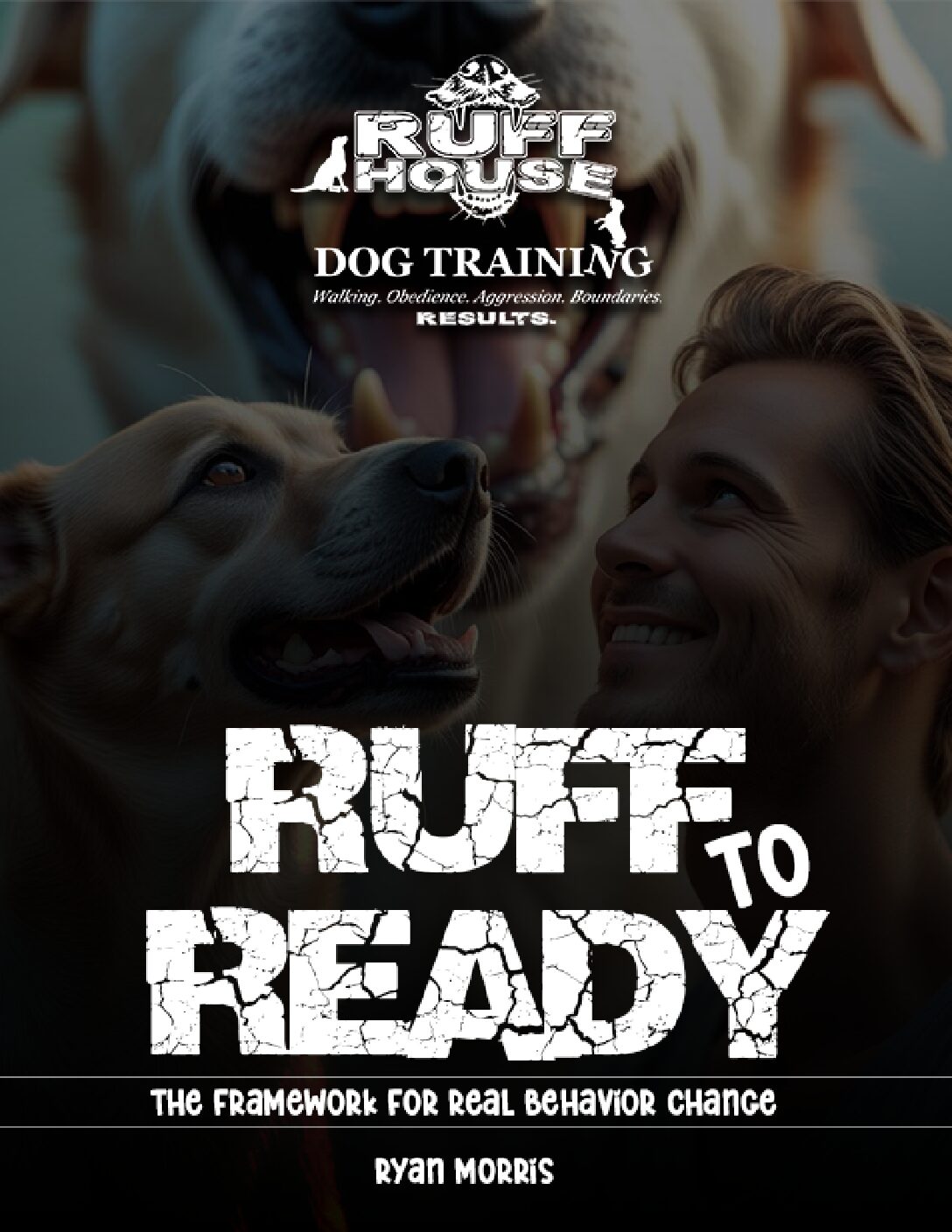
Unlock Real Behavior Change – Download Your Free Guide Now
"*" indicates required fields

Photo by Markus Winkler on Unsplash
Understanding Your Rescue Dog’s Background
Most rescue dogs come from unpredictable situations. They might have lived in shelters, foster programs, or situations where they didn’t receive proper care or training. This background shapes their behavior in ways that require special attention and understanding.
Unlike puppies who are essentially blank slates, rescue dogs often carry emotional and behavioral imprints from their past experiences. A dog who was surrendered for behavioral issues will need different training approaches than one who lost their home due to family circumstances. Some rescue dogs may have lived on the streets, making them resourceful but potentially anxious about food security or territorial behavior.
The key is recognizing that your rescue dog isn’t being difficult on purpose. Their behaviors often stem from survival instincts or learned responses that helped them cope with previous situations. This understanding forms the foundation for effective training.
Initial Adjustment Period: The First Few Weeks
The first few weeks with your rescue dog are crucial for establishing a safe and nurturing environment. This adjustment period, often called the “honeymoon phase,” can last anywhere from a few days to several months. During this time, your new family member is learning about their new life while you’re discovering their personality and needs.
Many rescue dogs will seem almost perfect during the first week or two. They might be quiet, well-behaved, and seem to adapt quickly. Don’t let this fool you—they’re likely still processing the change and may not be showing their true personality yet. As they become more comfortable, you might see new behaviors emerge, both positive and challenging.
Creating structure during this period is essential. Establish consistent meal times, walking schedules, and sleeping arrangements. Your rescue dog needs to understand that this is their forever home and that they can trust you to meet their basic needs consistently.
Common Behavioral Challenges With Dog Rescue
Anxiety and Fear-Based Behaviors
Many rescue dogs exhibit anxiety-related behaviors, including excessive barking, destructive chewing, or attempts to escape. These behaviors often stem from uncertainty about their new environment or past traumatic experiences. A dog who spent time in multiple homes might struggle with separation anxiety, while one who lived on the streets might be overly vigilant about potential threats.
Resource Guarding
Dogs who experienced food insecurity may guard their food, toys, or even their favorite sleeping spots. This behavior isn’t aggression in the traditional sense—it’s a learned survival mechanism. With proper training techniques, most dogs can overcome resource guarding tendencies.
Leash Reactivity and Social Issues
Some rescue dogs haven’t been properly socialized or may have had negative experiences with other animals or people. These at risk dogs might bark at other dogs on walks, pull excessively, or show fear-based reactions to new situations. These behaviors require patient, consistent training to overcome.

Photo by Fabian Gieske on Unsplash
Building Trust and Establishing Leadership
Trust forms the cornerstone of any successful relationship with a rescue dog. These animals have often learned that humans can be unreliable, so proving your trustworthiness takes time and consistency. Every interaction is an opportunity to build or erode that trust.
Establishing yourself as a calm, confident leader doesn’t mean being harsh or dominating. Instead, it involves setting clear boundaries, providing consistent routines, and following through on your expectations. Your rescue dog needs to understand that you’re capable of keeping them safe and making decisions for the household.
One effective approach involves what many trainers call “nothing in life is free.” This means your dog earns everything—meals, walks, attention—through simple obedience commands. This system helps establish your leadership while building your dog’s confidence through predictable success.
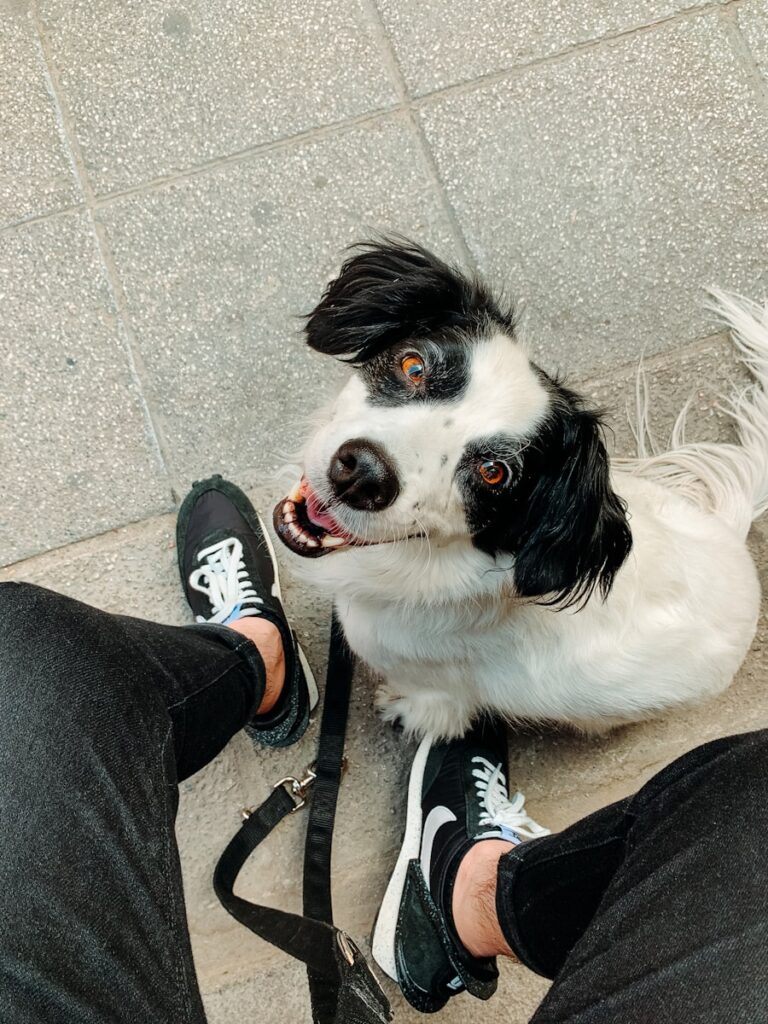
Photo by Eduardo Arcos on Unsplash
Essential Training Techniques for Rescue Dogs
Balanced Training Methods
Balanced training methods incorporate both positive reinforcement and negative reinforcement to guide a dog’s behavior. This approach aims to provide a comprehensive framework for training that takes into account the individual needs and temperament of each dog. Positive reinforcement focuses on rewarding desired behaviors with treats, praise, or play, which encourages the dog to repeat those actions. On the other hand, negative reinforcement involves applying a mild, non-harmful correction to discourage undesired behaviors.
Proponents of balanced training argue that it creates a clearer communication line between the owner and the dog. By using a combination of rewards and corrections, dogs are able to understand both what is expected of them and the boundaries they shouldn’t cross. This method can be particularly effective for addressing more stubborn or ingrained behavioral issues that might not respond to exclusively positive reinforcement.
However, balanced training should always be applied with care and consideration to avoid misuse. The goal is not to instill fear but to guide the dog through consistent and fair behavior cues. When used properly, a balanced training approach can lead to a well-rounded, respectful, and happy companion. Consulting with professional trainers who specialize in balanced methods can be invaluable, ensuring that the training is both effective and humane.

How Ruff House Dog Training Implements Balanced Training Methods
At Ruff House Dog Training, the balanced training approach is at the core of our philosophy for building strong, positive relationships between dogs and their owners. We recognize that every dog is unique, and our methods are designed to address individual needs while promoting respect and understanding. By combining positive reinforcement techniques with clear boundaries and corrections when necessary, we create a reliable framework that dogs can easily understand and follow.
Our trainers focus on rewarding desired behaviors to encourage learning while using fair and appropriate corrections to address undesirable actions. This balanced approach ensures that every dog feels supported and motivated while also understanding clear expectations. We prioritize effective communication between dog and owner, empowering families with the skills and confidence to continue reinforcing good behaviors at home.
At Ruff House, our commitment to humane and ethical training means that every method we use is rooted in compassion and a deep understanding of canine behavior. Through balanced training, we help foster obedient, happy, and well-mannered dogs that thrive within their families and communities
The Role of Professional Training
While many rescue dog owners successfully train their pets independently, professional help can accelerate progress significantly. Experienced trainers understand the unique challenges rescue dogs face and can provide targeted solutions for specific behavioral issues.
Professional trainers also train the humans in the household, ensuring everyone uses consistent methods and commands. This consistency is crucial for rescue dogs who may have experienced confusion or mixed signals in previous homes. A single training session with a professional can often provide insights and techniques that take weeks to discover independently.
Many trainers offer specialized programs for rescue dogs, understanding that these animals need different approaches than puppies from breeders. They can assess your dog’s specific needs and create a customized training plan that addresses both behavioral issues and basic obedience.
Creating Long-Term Success
Training a rescue dog isn’t a short-term project—it’s an ongoing relationship that evolves over time. Some dogs show remarkable progress within weeks, while others may need months or even years to fully overcome their past experiences. The key is maintaining consistency while celebrating small victories along the way.
Regular exercise plays a crucial role in successful training. A tired dog is generally a well-behaved dog, and physical activity helps reduce anxiety and destructive behaviors. Mental stimulation through puzzle toys, training sessions, and new experiences also contributes to your dog’s overall well-being.
Remember that setbacks are normal and don’t indicate failure. Your rescue dog might have great weeks followed by challenging periods, especially during times of stress or change. These fluctuations are part of the process, not signs that training isn’t working.
When to Seek Additional Help From Ruff House Dog Training
Sometimes, despite your best efforts, professional intervention becomes necessary. Signs that you might need additional support include aggressive behaviors toward people or other animals, severe separation anxiety that doesn’t improve with training, or destructive behaviors that pose safety risks.
Don’t view seeking help as failure—it demonstrates commitment to your dog’s well-being and your relationship’s success.
This online course, ‘Ruff To Ready’ by Ryan at Ruff House Dog training, the head trainer, will be your ultimate training guide.
Another tool to guide you through training is Ryan’s E-book ‘Ruff To Ready’. Get your free copy now!
Helpful Resources for Rescue Dogs
Here are 7 valuable resources and websites to assist you on your journey with rescue dogs:
ASPCA (American Society for the Prevention of Cruelty to Animals)
Offers resources on pet adoption, animal behavior, and welfare to support rescue dog owners.
An extensive platform to search for adoptable dogs in your area, as well as tips for transitioning rescue pets into your home.
A comprehensive site with advice on adoption, fostering, and caring for rescue animals.
The Humane Society of the United States
Provides information on adopting, training, and supporting rescue dogs as they adjust to their new environment.
RSPCA (Royal Society for the Prevention of Cruelty to Animals)
A UK-based organization offering adoption services, rescue support, and dog care resources.
Training Resources from Karen Pryor Clicker Training
Dedicated to positive reinforcement training techniques that can be especially beneficial for rescue dogs.
Animal Rescue Site by GreaterGood
Features articles, tips, and resources on pet rescue, as well as ways to support animal shelters globally.
These resources are excellent starting points to help provide the best care and support for your rescue dog.
Building Your Support Network
Successfully training a rescue dog often requires community support. Connect with other rescue dog owners who understand the unique challenges you’re facing. Local dog parks, training classes, and online communities can provide valuable resources and encouragement.
Your veterinarian can also be an invaluable resource with medical care, helping rule out medical issues that might contribute to behavioral problems.
